Is it Possible to Use DP and PP/DS Without SNP?
Executive Summary
- A question that sometimes arises is whether DP or PP/DS can be used without SNP.
- There are important implications for doing this, which we will cover.
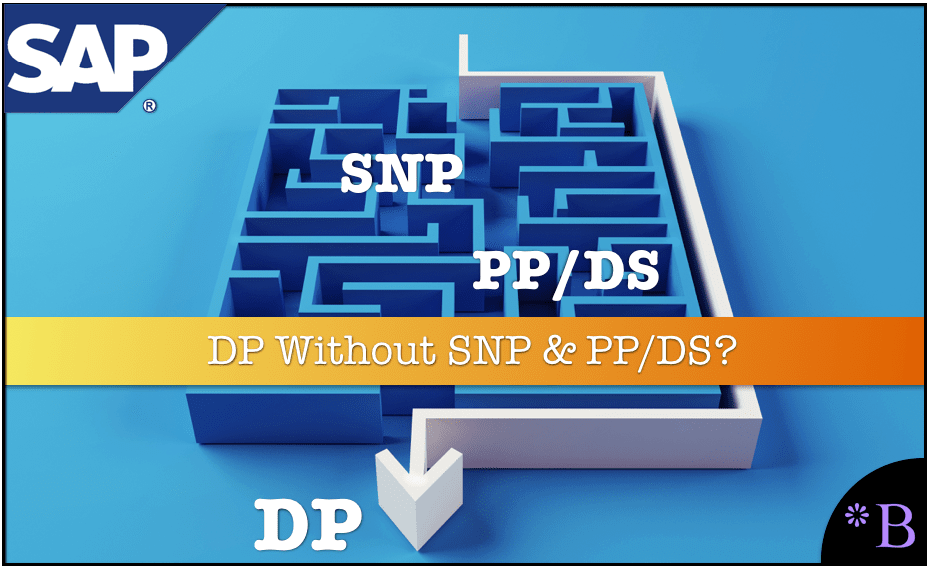
Introduction to DP and PP/DS without SNP
There is a standard flow to APO concerning demand, supply, and production planning. The flow is the demand plan is released to SNP, which is then released as a supply plan to PP/DS. However, every APO module that is implemented takes effort, time and money, and of course, maintenance.
What was recently proposed to me was to implement DP with PP/DS, but without SNP. It is not hard to consider how the ERP system, DNP, and SNP flows would appear, as I have shown below.

PP/DS’s Supply Planning Capabilities
Secondly, there are capabilities that PP/DS has that do cover supply planning.
PP/DS generally has a short planning horizon. However, the planning horizon is flexible, as can be seen in the screenshots below:
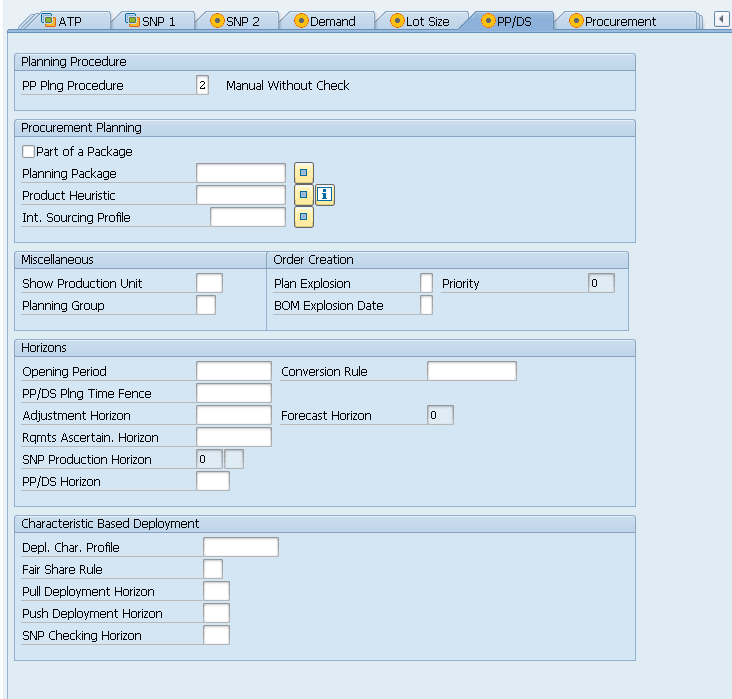
This is the PP/DS tab in the Product Location Master in APO. Notice that the PP/DS Planning Time Fence field and the PP/DS Horizon field are available to be set by the user.
Secondly, on the Characteristic Based Deployment tab, deployment — a supply planning function and typically performed in SNP, can be performed from within PP/DS.

Here is another setting called the Time Profile.
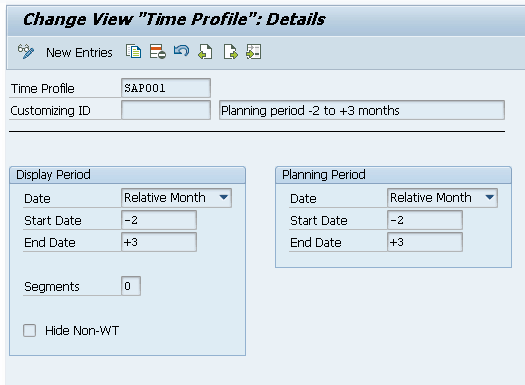
This allows the planning period to be set up automatically from within the Detailed Scheduling Planning Board.
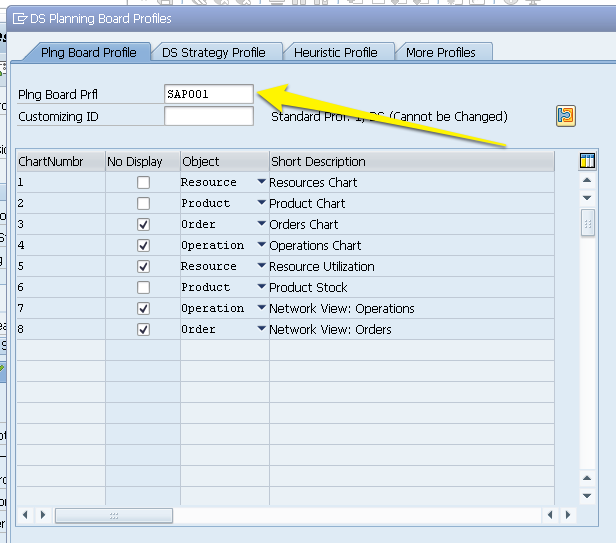
This is a default time profile that can also be changed from within the DSPB.
Storage and Planning Buckets
PP/DS plans in daily buckets. That it does not have the flexibility to use different planning buckets and storage buckets that DP and SNP do have.
Here you can see in SPRO, where the planning bucket profiles are set (the buckets shown in the Planning Book), there is no planning bucket profile for PP/DS.

Long Time Horizon Planning
When SNP is used, often a telescoping Planning Book is configured. You can read about how to configure this type of Planning Book in this article.
I quote from this article below:
“It is a frequent request at different clients is to provide a telescoping view of the Planning Book. This means that they want to see the Planning Book in days, then in weeks, and then in months, and they want to specify how many periods they would like to show each (7 days, 14 weeks, 16 months etc.). In order to do this its necessary to perform configuration of the Time Bucket Setting. Unfortunately, SAP does not ship with a standard telescoping Time Bucket Setting, so it must be created anew for each company during implementation.”
This telescoping has several advantages. First, the planner does not need to see a fine detail level further in the planning horizon. Secondly, using a more appropriate granularity level for most planning horizon cuts down on processing time.
The Storage Bucket Profile is assigned to the Time Bucket Profile, which is then assigned to the Planning Book.
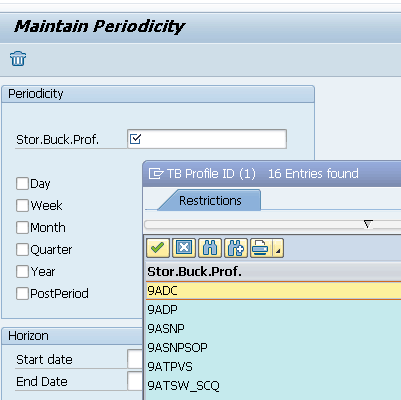
Here are some of the standard Storage Bucket Profiles.
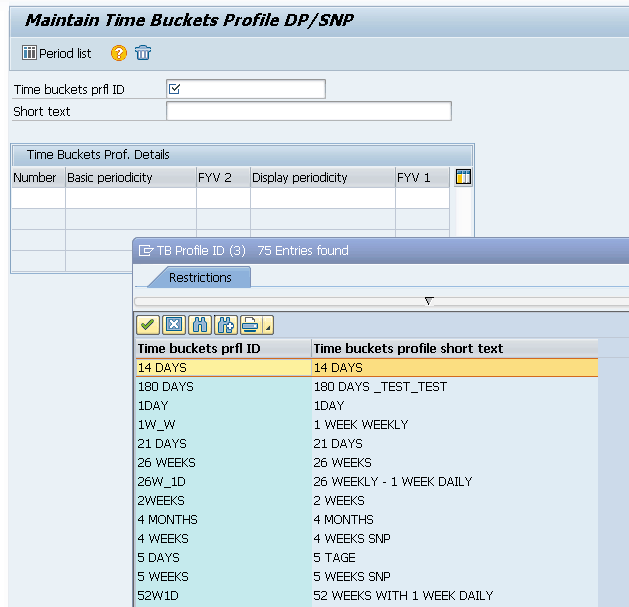
Here are some of the Time Bucket Profiles. Notice that the Storage Bucket Profile is assigned to the Time Bucket Profile.
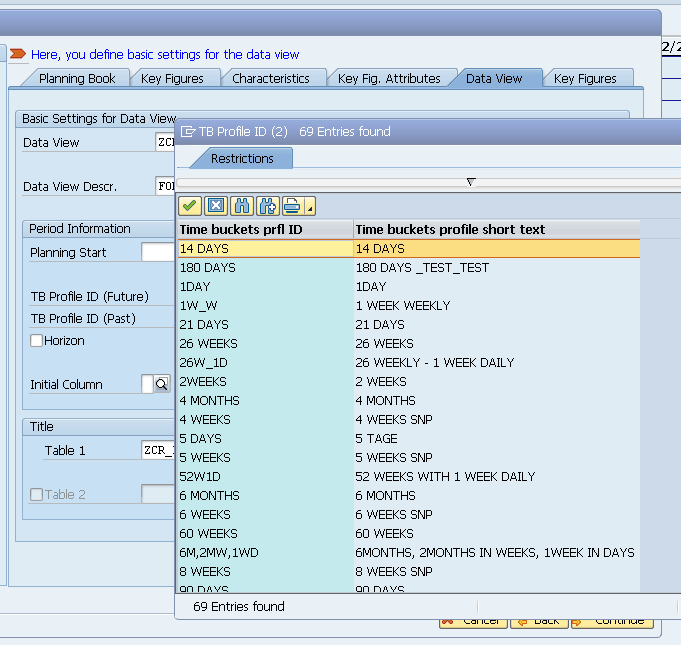
Finally, the Time Bucket Profile is assigned to the Planning Book.
Therefore, the problem is that PP/DS does not come with the same flexibility concerning how the granularity of its planning can be controlled. This is a long way of demonstrating that PP/DS is not designed to run a long-range horizon — of course, it can do it, as is demonstrated by the earlier settings that showed the planning horizon of PP/DS is controllable.
However, PP/DS is designed to plan at a fine detail for its overall horizon.
Purchase Requisitions
PP/DS creates Preqs, as does SNP. PP/DS uses the procurement type, which is on the Procurement Tab of the Product Location Master the same way that SNP does to determine whether to create a Purchase Requisition or a Planned (Production) Order in response to a requirement.

Procurement Type (F – Ext Proc, E – In House Prod, X – Either, P External Procurement Planning)
Lot Sizing
The lot-sizing settings apply to both SNP and PP/DS. Therefore, if a Fixed Lot Size is set for 25,000 units, this lot size applies to both PP/DS and SNP.
SNP Functionality
So while there is considerable overlap in the settings used by SNP and PP/DS, there are, naturally, several things that SNP does that PP/DS does not do — and this is the problem with using DP and PP/DS without SNP in the middle.
This includes but is not limited to the following:
- Forecast Consumption: Forecast consumption is the decrementing of forecasts by sales orders. Optimally speaking, forecasting is only a placeholder for a sales forecast. Forecast consumption prevents both the forecast and the sales order from being used to drive supply. The purpose of backward and forward forecast consumption is to reduce or remove the natural tendency to over order when consumption only occurs in one period. This is explained in the following article. PP/DS cannot perform forecast consumption — while SNP does do forecasting consumption. Therefore, if SNP is out of the implementation, the option is to perform forecast consumption in ECC, which means that the forecast is sent to ECC rather than SNP.
- Receipt of the Forecast: The natural flow in APO is releasing the forecast from DP to SNP. Therefore, no transaction releases the forecast to PP/DS. This means that if SNP is left out of the equation, some custom method must be created to drop the forecast directly from DP to SNP.
Conclusion
Given the restrictions listed above, it is difficult to recommend going without SNP using DP and PP/DS.